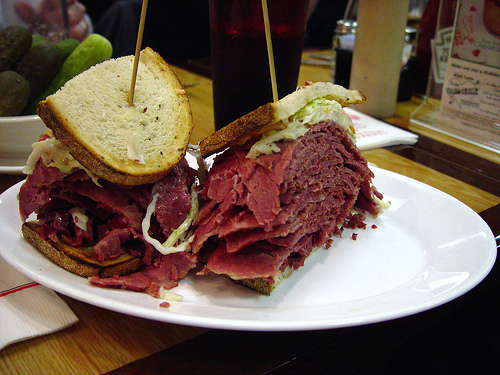
St. Patrick's day is coming up, and a lot of people are planning to cook corned beef this weekend to celebrate. But when you go to the store to buy corned beef, you are faced with a decision: Point cut or flat cut?
Corned beef comes from the brisket, which is a triangular muscle on the cow's lower chest. This is a tough cut of meat, because it gets a lot of use. Brisket is a big piece of meat, and corned beef is usually one half of the brisket: the top (point) or the bottom (flat cut).
The main difference between point cut and flat cut is that point cut has a lot more fat on it. There are pros and cons here. If you are planning a long, slow roast, then a leaner cut of meat can turn out very dry at the end. (Especially with a high salt meat like corned beef.) Fat also equals flavor, so the point cut is a lot more flavorful than the flat cut.
However, the point cut is frankly just too fatty for a lot of people to deal with. It varies from cut to cut, but some point cuts can be very fatty indeed. Not very healthy, kind of a waste of money (since you may end up hacking off a lot of that fat) and sort of gross, to boot.
A fatty point cut will also lose more volume in the cooking. Say you get a four pound point cut, it can lose up to half its volume in cooking as the fat renders out (liquefies). This could leave you with a much smaller amount of meat than you were planning on.
If you do choose the flat cut, you may want to compensate for its leanness by adding extra liquid and flavor, whether it's in the form of broth, butter, wine, or a combination.
Image courtesy Flickr/hypergenesb

0 comments